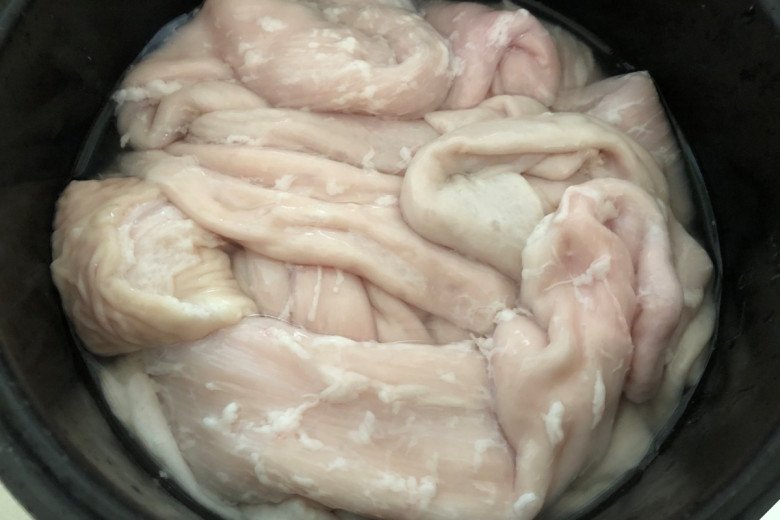
The pig’s intestine is an excretory organ, so it’s inevitable that it will have a strong, pungent odor. Instead of buying pre-made pig’s intestine from the store, which tends to be expensive and may not be hygienically prepared, I prefer to buy it raw and clean it myself.
How do you usually prepare pig’s intestine? Most people use salt, while others opt for baking soda. However, neither of these methods yields excellent results, and the odor can be challenging to eliminate.
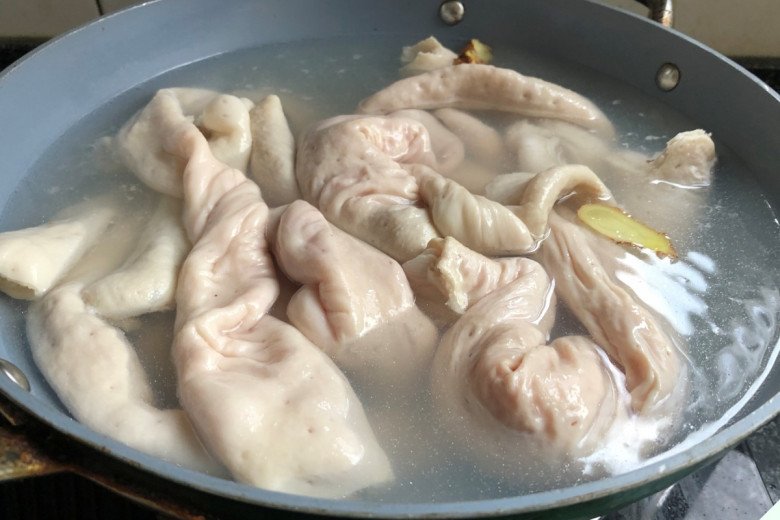
Today, I’ll share a simple trick to make pig’s intestine clean and odorless. Essentially, I only use two ingredients: wheat flour and white vinegar. Check out the step-by-step guide below, especially if you’re a fan of pig’s intestine dishes. Make sure to save and try this method!
Ingredients
– Pig’s intestine
– Wheat flour
– White vinegar
– Filtered water
– Boiling water
Instructions
1. Rinse the pig’s intestine with water, then add 3 tablespoons of wheat flour. Rub the flour all over the intestine to absorb any slimy substances on its surface. Scrub for about 5 minutes, then rinse with water.

2. Turn the intestine inside out and cut off the thick layer of fat inside. This fat not only contributes to the strong smell but is also very greasy. After removing the fat, add a large spoonful of wheat flour and scrub thoroughly. Similar to the previous step, the flour will absorb any remaining impurities. Rinse the intestine and place it in a clean bowl.
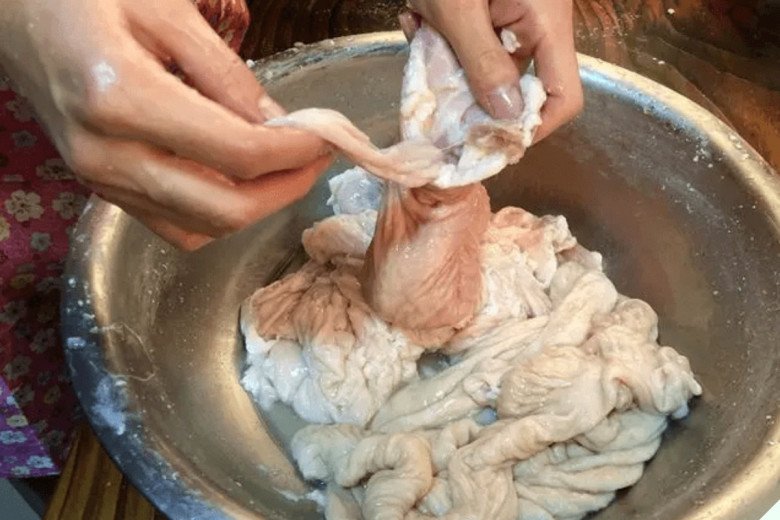
3. Add 2 tablespoons of white vinegar and rub it into the intestine several times. Let the intestine soak in the vinegar for about 20 minutes. Vinegar is acidic, which helps neutralize the pungent odor effectively.
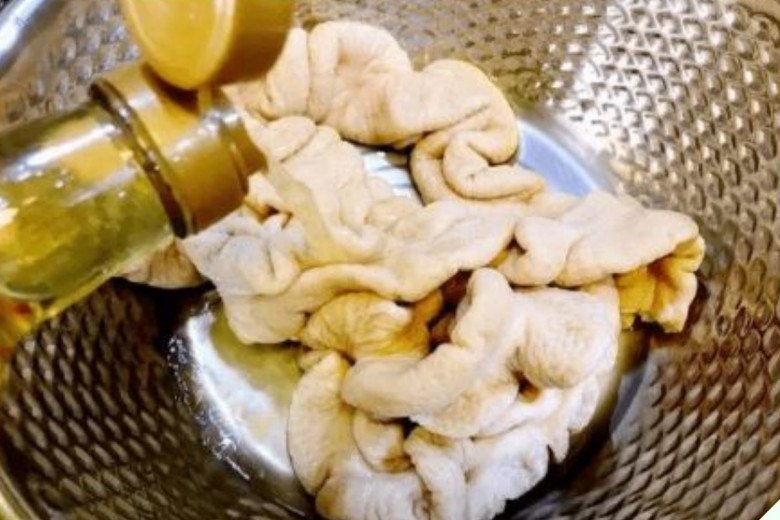
4. After soaking, remove the intestine from the vinegar and place it in a clean pot. Add water, sliced ginger, and cooking wine, and boil over high heat for about 5 minutes. During this process, skim off any foam that forms, then rinse the intestine one more time.

* Note:
If you don’t have white vinegar, you can substitute lemon juice or rice wine. These alternatives also work well to disinfect and neutralize odors.
Additionally, peanut oil is an excellent choice for pre-treating pig intestines. Just a small amount of vegetable oil will effectively clean the entire intestine.
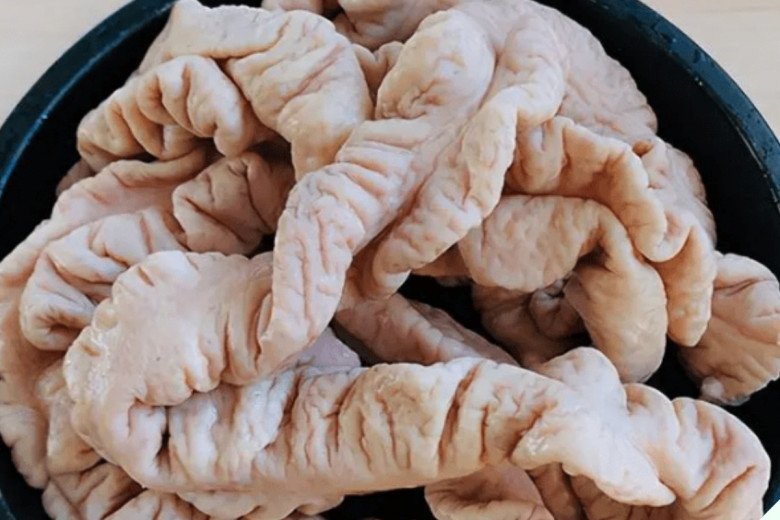
Once the pig’s intestine is properly cleaned and pre-treated, it can be used to create delicious dishes.
Braised Pig Intestine Casserole
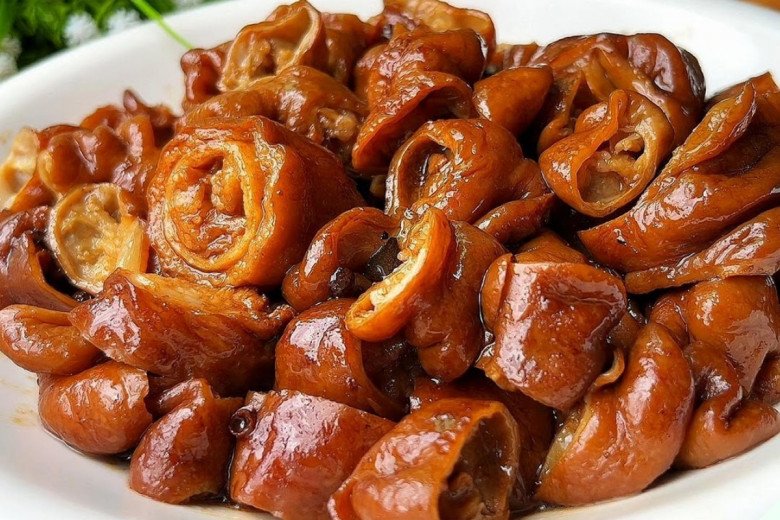
1. Sauté ginger, scallions, and garlic. Then, add one can of beer and one bowl of filtered water and bring it to a boil.
2. Season with salt, rock sugar, seasoning powder, dark and light soy sauce, dried chili, and meat seasoning packet. Stir well.
3. Add the cleaned pig’s intestine to the broth. Simmer over low heat for about 1 hour and 30 minutes.
4. Once the broth has reduced and thickened, and the intestine is cooked, remove it from the heat. Cut the intestine into bite-sized pieces.
5. Arrange the intestine on a plate and drizzle the sauce over it. Garnish with coriander to make the dish more appealing.
Stir-fried Pig Intestine with Pickled Vegetables

1. Clean the pig’s intestine and cut it into bite-sized pieces. Rinse the pickled vegetables to reduce their sourness.
2. Heat a pan and stir-fry the pickled vegetables until they soften and reduce in volume. Set them aside in a bowl.
3. Heat some cooking oil and sauté scallions, ginger, garlic, and chili. Add a spoonful of bean paste, then add the pre-treated pig’s intestine and stir-fry evenly. Season with cooking wine to neutralize any remaining odor, a bit of dark soy sauce, white sugar, and oyster sauce. Continue stir-frying until the intestine absorbs the flavors.
4. Add the stir-fried pickled vegetables and cook for another 1-2 minutes before turning off the heat.
5. Serve the stir-fried pig’s intestine and pickled vegetables in a deep dish while it’s still hot.
These delicious dishes made from pig’s intestine are truly exceptional. The chewy and fatty texture of the intestine goes well with rice or as a beer snack.

































